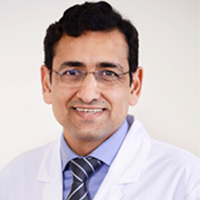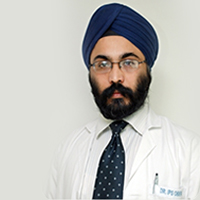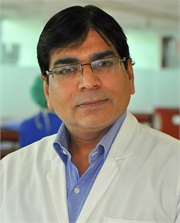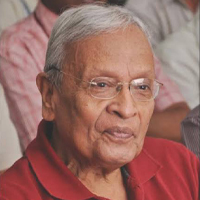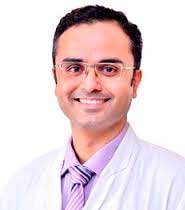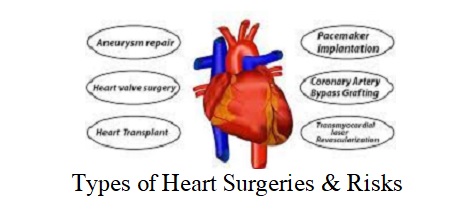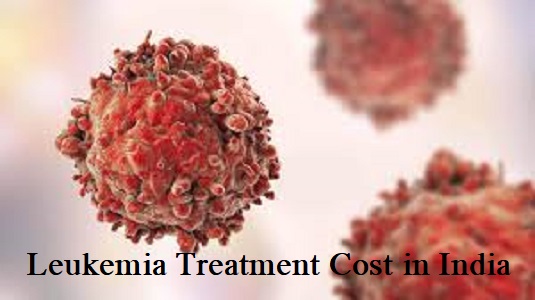Rhinoplasty Surgery: Cost, Diagnosis, Procedure & Recovery
Rhinoplasty, sometimes known as “nose job,” is a surgical treatment that changes the form, size, or function of the nose. The procedure includes changing the nose’s bone, cartilage, and skin to produce the desired result. Individuals choose rhinoplasty surgery for aesthetic or practical reasons, including restoring face symmetry or fixing congenital defects.
During a consultation with an experienced plastic surgeon, topics such as general health, facial characteristics, and personal desires are covered. The surgeon describes the intended changes potential risks, recovery time, and associated costs. Rhinoplasty can be used to remove humps, straighten bridges, reshape tips, and modify nostril sizes. Whether for medical or cosmetic goals, the surgery attempts to increase both look and functioning, adding to a person’s general well-being and confidence.
India has emerged as an influential nation in the global rhinoplasty business, ranking fourth in the globe and accounting for 11.5% of the total. According to the American Society of Cosmetic Surgeons, rhinoplasty is the most prevalent facial cosmetic surgery operation worldwide, with around 220,000 procedures performed each year.
Why is Rhinoplasty performed?
Rhinoplasty, a popular plastic surgery operation, serves a variety of reasons, including improving both the cosmetic and functional elements of the nose. The procedure is performed for the following reasons:
- Correcting Appearance: Rhinoplasty can modify the size, shape, or proportions of the nose, addressing issues such as a bulbous, upturned, hooked, or drooping look.
- Addressing Birth Abnormalities: Rhinoplasty may be used to fix birth abnormalities that disrupt the nose’s structure or symmetry.
- Injury Repair: Rhinoplasty is a common procedure to address concerns caused by nasal injuries, such as fractures or other traumas that affect the nose’s structure and function.
- Improving Breathing: Functional rhinoplasty can be used to treat breathing issues such as a deviated septum or obstructed nasal passages, resulting in better overall respiratory health.
- Nostril Modification: The surgery can resolve problems with nostril size, width, or orientation, resulting in a harmonious and symmetrical look.
- Bridge Reshaping: Rhinoplasty is efficient at removing obvious dips or lumps from the nasal bridge, resulting in a smoother and more refined profile.
- Face Balance: The technique is used to make the nose smaller or bigger, resulting in better face balance and overall aesthetic harmony.
- Cosmetic Desires: Individuals often choose rhinoplasty for cosmetic reasons, desiring to modify the size, angle, or shape of their nose to better suit their preferences.
- Age Consideration: Depending on the objective of the operation, people may need to wait until the nasal bone is fully developed before having rhinoplasty. Cosmetic treatments tend to wait until about age 14 or 15 for females and a little later for boys, although functional rhinoplasty can be performed sooner to help with breathing problems.
What are the risk factors associated with Rhinoplasty?
Rhinoplasty carries inherent risks that patients should be aware of. The potential risk factors for rhinoplasty include:
- Bleeding: Bleeding is a common concern during and after rhinoplasty, and it may require medical treatment.
- Infection: The surgical site is prone to infection, necessitating extra caution in post-operative care.
- Anesthesia Reaction: Adverse responses to anesthesia are possible, and patients may encounter difficulties such as nausea or breathing problems.
- Breathing Difficulties: Rhinoplasty has the potential to cause difficulty with nasal breathing, which might lead to long-term concerns.
- Chronic Numbness: Because of nerve injury during the treatment, some people may have chronic numbness in and around their noses.
- Uneven Appearance: The nose may seem uneven after rhinoplasty, affecting the desired aesthetic result.
- Pain, Discoloration, and Swelling: Temporary side effects such as pain, discoloration, and swelling can persist, affecting the initial healing phase.
- Scarring: While scarring is usually minor, it can develop, especially around the base of the nose.
- Septal Perforation: A hole in the wall between the left and right nostrils, known as septal perforation, is an uncommon but potential risk.
- Need for Additional Surgery: In some cases, patients may require additional surgery to address poor outcomes or problems.
- Alterations in Sense of Smell: There is a risk of changes in the sense of smell after rhinoplasty, however, these are usually temporary.
- Loss of Support: The procedure may cause the nose to lose support, which could affect its structural integrity.
- Contour Deformities: Rhinoplasty increases the risk of contour deformities, which damage the overall look of the nose.
- Nasal Breathing Problems: Rather than improving, nasal breathing problems may increase after surgery.
- Tiny Burst Blood Vessels: After surgery, burst blood vessels may emerge as small red patches on the skin’s surface, though these are usually minimal.
What is the difference between Rhinoplasty and Septoplasty?
Rhinoplasty is a cosmetic surgical operation intended to improve the external look of the nose by changing its form, size, and symmetry. It addresses problems of bone, cartilage, and skin. On the other hand, septoplasty is a surgical procedure that corrects abnormalities and improves airflow by focusing on interior nasal tissues, namely the nasal septum. While rhinoplasty is largely concerned with cosmetic improvements, septoplasty is concerned with functional improvement, namely breathing concerns. In some cases, both surgeries are carried out simultaneously to create a total enhancement that combines cosmetic benefits with enhanced nasal functioning.
What are the various surgical methods for rhinoplasty?
- Open Rhinoplasty: It is a nose-reshaping technique that involves incisions to remove the skin from the bone and cartilage. This allows a good view of the underlying nasal anatomy, allowing for more extensive structural modifications to the nose.
- Closed Rhinoplasty: It is a small nose remodeling treatment that involves incisions inside the nose. This method allows the surgeon to separate the skin from the bone and cartilage to reshape it, making it excellent for minor modifications, and the incisions are hidden inside the nose.
- Cosmetic rhinoplasty: It enhances the look of the nose and face. It focuses on producing cosmetic enhancements for face symmetry by resolving issues about the size, shape, or symmetry of the nose.
- Nonsurgical Rhinoplasty (Filler Rhinoplasty): It is a cosmetic surgery that uses dermal fillers to temporarily correct nasal abnormalities. This method does not need surgery to straighten a sagging nose tip or repair a tiny bump.
- Functional Rhinoplasty: It is a reconstructive surgery that restores nasal shape and function following sickness, cancer treatment, or damage. It can also treat congenital abnormalities and fix a deviated septum to enhance breathing.
- Secondary Rhinoplasty: It is also known as revision rhinoplasty, and is a corrective operation that addresses issues that arise after the first rhinoplasty surgery. It is often more complicated, addressing concerns that may occur throughout the healing process.
How is Rhinoplasty Surgery performed in India?
Rhinoplasty, a common plastic surgery technique, is carried out in India with careful consideration of individual goals and anatomical factors. The procedure begins with an initial consultation in which the surgeon assesses the patient’s medical history, including any previous nasal obstructions or procedures, and discusses the desired outcomes.
Preoperative steps:
- Medical History: A thorough evaluation of the patient’s medical history, including concerns about bleeding problems that may affect surgical approval.
- Physical Examination: A comprehensive physical exam evaluates face characteristics both inside and outside the nose, helping the surgeon in making required alterations and understanding the influence on breathing.
- Images: Detailed images are taken from different perspectives, usually with computer software to create alternative outcomes and help discuss on surgical objectives.
- Expectations Discussion: A thorough discussion of the patient’s expectations, the reasons for surgery, and the possible results.
Surgical Techniques:
- Incision Types: Overview of open and closed rhinoplasty techniques for large or minor remodeling.
- Additional Types: An overview of cosmetic, nonsurgical, functional, and secondary rhinoplasty.
- Incision and Reshaping: Creating incisions and shaping bone and cartilage to get the desired look. Functional enhancements, such as septoplasty, might be advised.
- Closure: It involves repositioning the skin and covering wounds using tiny stitches. Nasal splints may be used.
Postoperative Care:
- Recovery: After surgery, patients should wear nasal splints and expect transient swelling and bruising. Swelling may last up to six months.
- Activity Restrictions: Avoid intense activities for 3 to 6 weeks, then return to social activities in 2 to 3 weeks.
- Follow-up: Scheduled appointments support maximal recovery by providing precise directions for activities, medicine, and care.
What are the phases of swelling after rhinoplasty?
Rhinoplasty, a transforming surgical surgery, involves several stages of swelling throughout the recovery period. The path to the outcome consists of the following major stages:
- Initial Four to Six Weeks: In the first four to six weeks after surgery, individuals may have swelling, which is a normal reaction. The nose appears larger as a result of tissue healing and fluid retention. Bruising and color changes in the surrounding skin are usual during the period of transition.
- Three months after surgery: The swelling progressively reduces, indicating the end of the acute postoperative period. Approximately 90% of the initial swelling decreases, restoring the nose’s smoothed and natural look.
- One Year After Surgery: Swelling usually disappears within three months after surgery, although some may remain for up to a year. This phase marks the completion of the body’s healing process, with ultimate outcomes visible when residual swelling decreases.
- Individual Healing Variations: Individual healing varies based on genes and health status, affecting swelling duration and intensity. Adherence to postoperative treatment, including follow-up sessions, is necessary for full recovery.
What is the cost of Rhinoplasty in India?
Rhinoplasty costs in India range from $200 to $2,700. The average cost is around $1,180. Factors influencing the cost range include the surgeon’s experience, the location of the hospital, and the complex nature of the rhinoplasty treatment. Patients may also consider other costs such as consultation fees, pre-operative diagnostics, and post-operative care.
What is the success rate of Rhinoplasty in India?
In India, rhinoplasty procedures have a high success rate, ranging from 85 to 90%. This success rate represents the favorable outcomes and patient satisfaction obtained through rhinoplasty surgeries around the country. This achievement is due in part to the skills of professional surgeons, advances in medical technology, and a dedication to maintaining excellent surgical care standards. Individual outcomes may differ, and success is also impacted by factors such as patient adherence to postoperative care guidelines.
Top Hospitals for Rhinoplasty in India
India is home to a number of the best hospitals known for their expertise in rhinoplasty operations. These top hospitals for rhinoplasty in India are equipped with modern technology and trained medical specialists and provide a full range of treatments to people looking for nasal cosmetic or functional benefits. These hospitals’ exceptional reputations come from their dedication to patient care, modern surgical procedures, and adherence to international standards.
- BLK MAX Super Specialty Hospital
- Fortis Memorial Research Institute Gurgaon
- Indraprastha Apollo Hospital
- MAX Super Speciality Hospital Shalimar Bagh
- Global Hospital Parel
- Medanta Hospital Delhi
- Manipal Hospital Delhi
- Artemis Hospital Gurgaon
Best Doctors for Rhinoplasty in India
India has a large number of highly competent and specialized rhinoplasty doctors who are well-known for their competence and great patient outcomes. These best doctors for rhinoplasty in India are board-certified and have substantial expertise, are in high demand for their precision in nose procedures, which combine cosmetic and functional advantages.
- Manoj Johar – Max Super Specialty Hospital, New Delhi, India
- Anil Kumar Behl – Fortis Memorial Research Institute, Gurgaon, India
- Avtar Singh Bath – BLK Super Specialty Hospital, New Delhi, India
- Prateek Arora – Max Super Specialty Hospital Saket, New Delhi, India
- KaveshvarGhura – Fortis Memorial Research Institute, Gurgaon, India
- Surendra Kumar Chawla – Fortis Memorial Research Institute, Gurgaon, India
- Preeti Pandya – Fortis Memorial Research Institute, Gurgaon, India
- Anil Kumar Murarka – BLK Super Specialty Hospital, New Delhi, India
- Lokesh Kumar – BLK Super specialty Hospital, New Delhi, India
- Arun Sharma – BLK Super specialty Hospital, New Delhi, India
Contact Form
Attach Medical Report
Top Doctors & Surgeons in India
Why Choose Us

Personalized Care
24x7 Supports
Top NABH and JCI accredited Hospitals
Free Cost Estimation & Medical Opinion from Specialist
Get Free Tele/Video Consultation
Visa and Traveling Assistance
Post-surgery with Assistance in Follow-ups


